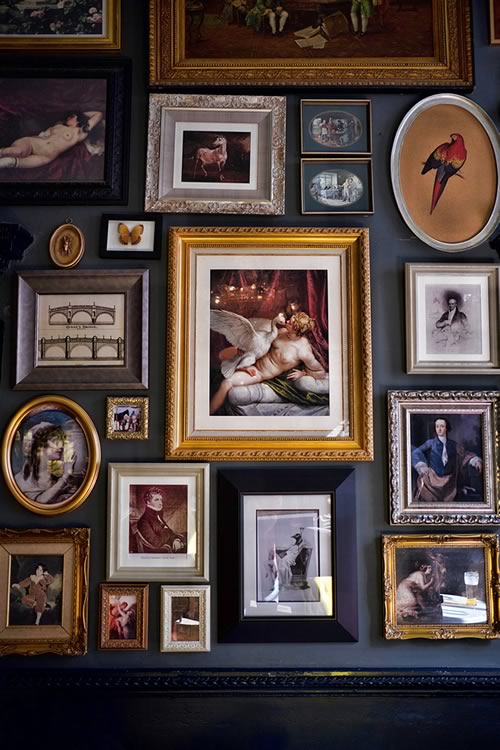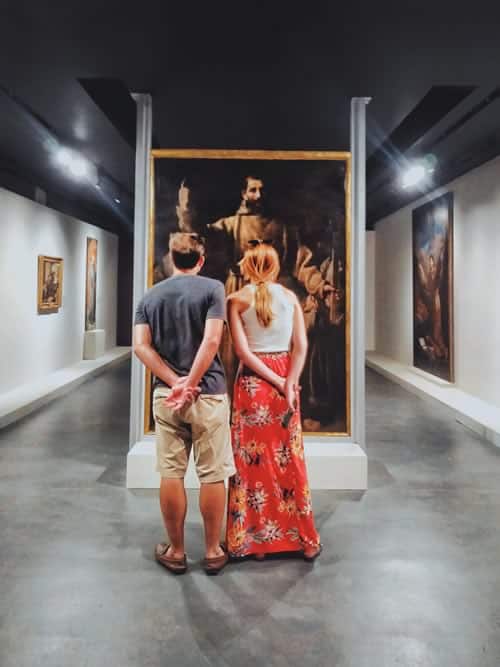You’ll find different types of art collectors across the globe in every populated area. Some have modest collections by the quantity of pieces and value. Others have collections worth so much they make the list of the world’s wealthiest. Many of them use ETChster to create Etchings of their prized holdings so they can easily manage each piece. But how similar are all of these art collectors?
In this article, we’ll explore various types of art collectors, their collecting styles, how they get started, and how they fit into the global art community. If you’re feeling inspired, you can take a look at our How to Become an Art Collector article.
The Enterprising Collector
Our first type of art collector is the enterprising collector. In our list of the most valuable art collections in the world, the Nahmad brothers would certainly fall into this category. Their predilection to keep most of their collection hidden in tax-exempt freeport warehouses and only surface pieces when they are reselling for a profit is a good indicator that their primary motivation is profit. Do they go to their freeport and spend time admiring their world-class pieces? We don’t know that they do. So why does this type of art collector buy art?
The Enterprising Collector’s approach is basically an investment-minded art collector. They seek to buy low and sell high. To do so, they have strong networks that help them identify pieces of original art that might be an opportunity. They then use their well-developed skills to evaluate whether or not to actually purchase. Thereafter, they have a keen sense of when a particular artist might be really “hot” and thus overvalued. That’s when they make a sale and reinvest profits in the next cycle of “bargain” pieces that they believe will appreciate over time.
Interestingly, the general public can somewhat participate in this style of collecting even if they can’t afford to purchase a work by a blue chip artist outright via new investment funds that hold blue chip art. Somewhat similar to a mutual fund, you can make small investments in a fund that pools similar-sized investments to go buy blue-chip artists. Of course, this type of collecting doesn’t have the benefits of physical, singular control of great works of art.

The Connoisseur
noun – an expert judge in matters of taste
Unlike other types of art collectors, Art connoisseurs are all about how their expertise impacts those around them. While they may still benefit economically from their art collecting, that’s not their primary motivation. They’re likely to be socialites and have broad networks. In addition to their taste in art, they likely have broad interests and great taste in many categories.
With that in mind, art connoisseurs are always going to be seeking ways to interact with others around their art. They want people to be aware of what they own. They seek opportunities to talk about their choices and why they made them. They feel validated when they receive attention from the press or are invited to exclusive events. If they are credited with starting a trend, that’s even better.
For a living artist, having a connoisseur begin to collect works can be a windfall. With so much of the value of art driven by who is collecting, having a tastemaker’s stamp of approval can be very valuable. A connoisseur collector is much more likely to make pieces available to shows and museums or refer other collectors than an Enterprising Collector, who is mostly working behind the scenes.

The Trophy Hunter
Whereas the Connoisseur is externally validated, the Trophy Hunter is an internally-validated type of art collector. They aren’t necessarily public about their art collecting at all. They’ve simply developed certain bucket list or checkbox items that they have to attain to make their art collection feel complete.
Unlike the Enterprising Collector, the Trophy Hunter has no reason to have pieces that accomplish the same goal, so their collections are never likely to grow as large. For a trophy hunter, each trophy can be defined differently. One goal might be to own one of 25 known pieces attributed to a specific artist that might not be that famous. Another trophy might be to own a piece valued at over $1 million or some other specific price target. Yet another trophy might be to own a piece by a specific artist such as a Rothko or Warhol. Philip Niarchos might be a trophy hunter. His collection is rarely seen publicly.
The Trophy Hunter definitely keeps their collection on display where they can see it. Are they willing to share it with a broader audience? That depends on how in-demand their collection is and how much effort is put forth to make it easy for them to share. Whereas the Connoisseur would actually seek out opportunities to share pieces with the public via galleries, museums, etc., the Trophy Hunter would need to be solicited and perhaps compensated as well.

The Hobbyist
Unless an art collector gets started via inheritance, other types of art collectors begin as hobbyists. Learn more about this type of collector in our article: Is Collecting Art a Hobby? The Hobbyist is doing well enough economically that they have some discretionary money to invest in art and has a light-enough schedule that there’s room to explore a new hobby. Hobbyist collectors are generally interested in culture overall.
Hobbyists are getting excited about making their homes more aesthetically interesting and better places for entertaining. They are beginning to have an understanding of the local art scene and may be exploring new relationships. They may have already defined their taste or collecting style, or they may be purchasing pieces that have little to do with each other. They are likely looking to educate themselves (at least casually) and may be seeking resources online or attending events to learn more about artists and art collecting.
Some hobbyists will lose interest over time. Others will graduate into other types of art collectors. And then some will casually collect for a lifetime of enjoyment. Learn more in our article: Is Art Collecting a Hobby?

Conclusion
Like many activities, the people involved in art collecting fall into different categories, in this case, all of which are part of the art ecosystem. With more and more technology being applied to fine art, the perceived barriers to becoming a fine art collector are receding. Am I rich enough? Am I sophisticated enough? Am I going to embarrass myself? Those types of doubts are disappearing with tools like ETChster and its Etchings becoming more prominent, along with the overall rise of middle-class art collecting.

